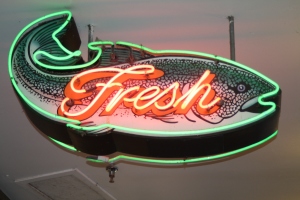
At one point or another in your life I’m sure someone has taken care of you without asking for anything in return.
Maybe they changed your stinky diaper, gave you advice you really needed, or handed you something for free that was worth it’s weight in gold.
But what does it actually mean to me to be a caretaker? There are a lot of things in my life that I must take care of, like my car or our tiny house. But I don’t think making sure those things are clean and operable really makes me a caretaker.
I think the true sense of the word caretaker entails giving little parts of yourself in order to create something beautiful that can be shared.
Any good gardener knows that they are not just a Dirt-Shoveller, Seed-Planter, or Hose-Wrangler. A good gardener knows deep down that they are willing to sacrifice little bits of themselves–whether of their time, their clean clothes, or their sweet equity–to create a beautiful and meaningful space that can be shared with others. And even better, a space that will provide something for them in return in the form of delicious healthy food.
Being a true caretaker is one of the most important values that compels me to carry on with our little homestead. Our garden, chickens, rabbits, and crazy puppy dog bring me enjoyment, yes, but more importantly just being a caretaker of them is valuable to me in an of itself.
How many times has a friend told you “If you don’t take care of yourself, you’ll never be able to take care of anybody else”? Oh how true it is…
I have been sick with a cold the past two days for the first time in almost a full year.
Yes, you read that correctly: I really never got sick this past flu season and I teach elementary-aged kids with runny noses that cough all over me.
Ridiculous, right?
It’s by design, not accident, that I’ve stayed so healthy. I made a strong immune system one of my goals for taking better care of myself this year, and have learned to make medicine for myself to prevent illness.
Some of my go-to daily preventatives during flu season have been my homemade Elderberry tincture, homemade Rosehips & Ginger Elixir, Vitamin C, Fish Oil, and homemade Bone Broth.
Once I feel a tickle in my throat, I amp it up with Organic Echinacea & Yarrow tea every 3 hours to boost my white blood cell count and flush the congestion out.
It has worked like a charm and I have no doubt this little bug will be gone within a few days.
Now before you think I’m trying to sound all “I-am-so-smart-and-take-better-care-of-myself-than-you,” know that I never used to do any of these things to take care of myself. It took a lot of research and trial-and-error to figure out what works for me.
Now they are as normal to me as brushing my teeth in the morning or making breakfast.
Healthy habits, once you get through the initial break-in phase, really just become a part of your daily routine.
I also feel at home when I am tending to nature and helping it bloom. I have always been a nature-lover, from back in the days of making daisy-chain headbands with my mom in the yard to my more recent immersion in herbal medicine. I feel at home when I have the sun on my cheeks and my hands in the dirt. I love the simplicity of nature, how it just makes sense to be there with others. I love botany and gardening and get excited about sharing my knowledge (and curiosity) with others.
I try to be a caretaker of nature and not just an observer by taking really great care of the soil, and not just stripping it of it’s nutrients year after year for my own sake. I see restorative agriculture as the only way to utilize the resources of the land without depleting it’s value for future generations. Even though our little homestead is itty-bitty, I see our space as an opportunity to provide health for myself and my family through real foods, and a great habitat that birds and wildlife will keep coming back to again and again.
My community is one of the most important places for me to be sacrificing bits of myself to create something beautiful that we can share.
If I’m just restoring the earth for myself, that’s not much of a legacy to leave behind, is it?
I’m a big fan of keeping it simple, so I tend to have a smaller sphere of influence and stick with that. I try to be a loving caretaker towards my husband, family, and a small core group of friends.
This looks like a lot of different things at different moments, but one of my core values is to do for someone (or something) else what you’d want for someone to do for you.
Whether or not it’s convenient or glamorous, being there to care for people in our community who need it is the only way to get through this life with a few ounces of sanity left, in my opinion. You community might look a lot different than mine. Your might have no family at all, or prefer a network of at least 100 friends to stay happy. If that’s what works for you that’s great! This is just how I’ve structured my life. I have a big-picture perspective that can easily run me in circles over-thinking things, so I need to keep things simple.
Of course, there are always days when I could care less about being anybody’s caretaker and just want to mope around. But when I’m really honest with myself, being a caretaker of myself, my community, and my earth is one of the most fulfilling jobs I could ask for.
-M.
_____________________________________________________________________________________________
What about you? How are you a caretaker of yourself? What are the little bits of yourself that you give in order to create a more beautiful space that can be shared with others, whether in nature or on your street?
_____________________________________________________________________________________________
This post was featured on:

























